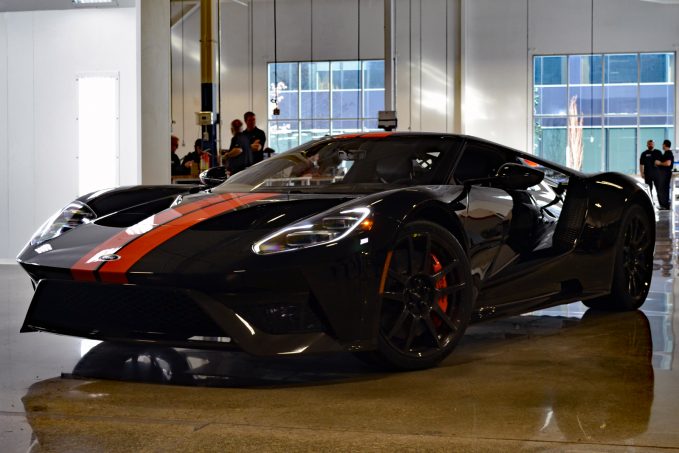Markham, Ont., is about as unassuming as any other big-city suburb.
A short drive from downtown Toronto — unless, of course, traffic or weather (or both) get in the way — Markham is home to the type of tree-lined streets where countless commuters start their days. But it’s also home to some superstars in their respective fields focused on nothing short of excellence.
If you watch hockey, and even if you don’t, you’ve probably heard of Steven Stamkos, the standout captain of the Tampa Bay Lighting. Long before he was winning NHL goal-scoring titles Stamkos was honing his craft at arenas in and around Markham. And just across town from where Stamkos grew up, you’ll find Multimatic, an automotive supplier with deep roots in motorsports.
After years of producing race-ready Fords, the company has been entrusted to build the production version of the all-new Ford GT, a supercar that could define a generation of the fastest and most advanced cars ever built. And with the first road-going version rolling off the line in — you guessed it — Markham, Multimatic opened its doors for a sneak peek of what’s in store. It may look and feel very different from the exotic locales of Maranello or Sant’Agata where Ferraris and Lamborghinis are built, but it’s clear that what’s going on here is just as special.
Modesty is the Key
Like the city it resides in, the manufacturing facility that’s home to production of the new GT is about as modest as it gets. It looks more like a furniture warehouse than a supercar epicenter churning out handbuilt examples of a street-legal Le Mans winner. But step inside and the craftsmanship necessary to build a car of this caliber is immediately evident.
The production area isn’t so much of an assembly line as it is an assembly room, a wide open space with more than a half-dozen workstations spread across thousands of square feet. Each is as important as the last, all crucial steps in the birth of each new GT, which is one of the most highly anticipated sports cars to come around in a while.
The first stop is the so-called “dirty room,” the place where the freshly made carbon fiber composite parts that are produced in-house at a Multimatic facility just down the street are brought together for the first time. “Dirty room” is a bit of a misnomer, because the place is cleaner than Howie Mandel’s mansion. It’s here where all the carbon bits — namely the tub and body panels — are trimmed and pre-fitted with the aluminum front and rear cradles before being disassembled for paint.
ALSO SEE: Ford GT Demand Spurs 2 More Years of Production
The paint process, of which there are a trio each of prime and finishing stations to complete cars, is run by a gentleman who was responsible for the 2005 Ford GT and Dodge Viper paint programs in the past, and is as meticulous as any of the 85 or so team members involved in building the new GT.
From there, it’s off to final assembly phase, where all 6,000 or so parts come together as one, including the car’s Roush-built twin-turbocharged 3.5-liter V6 engine. It’s the same engine as the one available in the Ford F-150, and even shares the same block and heads. But it’s not just the engine that’s shared with another member of the Ford lineup, with components like control modules and harnesses borrowed from models like the Fusion sedan. In fact, there are about 1,500 parts in the GT that carry over from its stable mates.
Low Volume, High Value
Multimatic is currently building about two cars a week in these early days, a figure that’s expected to jump to five as the process is smoothed out moving forward. Much of this smoothing involves coordinating with all those companies contributing to Ford’s Ferrari hunter. There are about 350 key suppliers to the GT project, which is a role Multimatic is familiar with. It currently manufactures, among other parts, the F-150’s control arms — key suspension components for the best-selling vehicle in North America.
And while supplying parts has been the biggest part of Multimatic’s operations since it was founded in 1984, the GT isn’t the first supercar the company has had a role in developing. The Aston Martin One-77 and De Macross GT1 are but two of a handful of projects Multimatic has been involved in over the years.
For those out there hoping to get their hands on a $400,000-plus GT of their own, it’s time to get in line — and even then, don’t count on it. Ford received more than 6,500 applications for ownership, but only about 250 cars are slated to be built annually. It’s planning a production run of at least four years, but the first three years’ worth are already spoken for, meaning 750 are earmarked for buyers from around the world. The first two cars to roll out of Multimatic’s facility in Markham? Those are headed to the garages of Bill Ford Jr. and Mark Fields, the executive chair and president of Ford, respectively.









